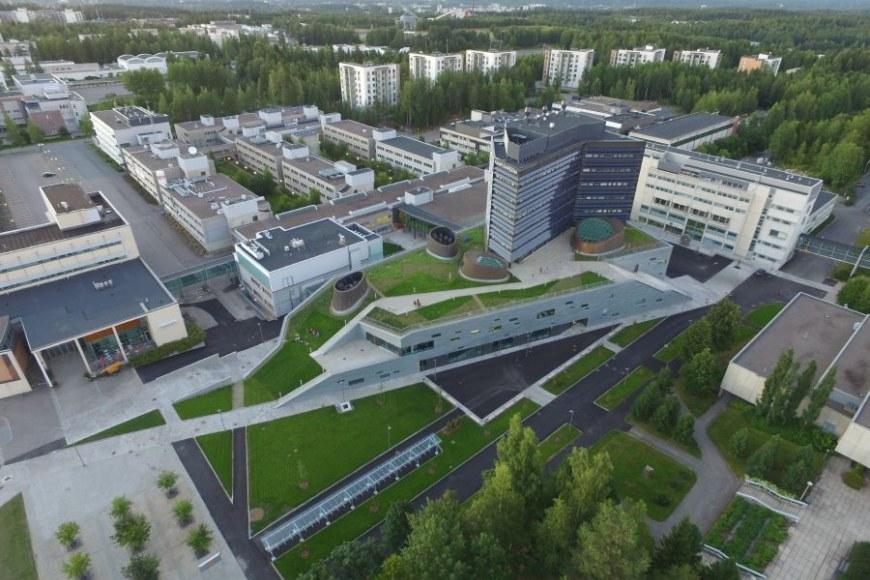Academy of Finland awards funding for five new postdoctoral researchers in natural sciences and engineering at Tampere University

The funding granted by the Research Council for Natural Sciences and Engineering amounts to approximately €11 million. Three-year grants were secured by 14% of all applicants.
While reviewing applications, the Research Council emphasised applicants’ competence and the scientific quality of their research projects. The funded researchers carry out high-quality research and maintain extensive collaborations.
Research sheds new light on the plasticity of glass and ceramics
Erkka Frankberg (Faculty of Engineering and Natural Sciences) will study glass plasticity at room temperature.
Oxide glasses are an integral part of the modern world, but their usefulness can be limited by their characteristic brittleness at room temperature. Glass materials – such as oxides and carbides – allow a wide range of tailored functional properties from full dielectrics to tuned semiconductors and are coupled with visible light transparency and good chemical and thermal stability. However, the brittle nature of glasses and ceramics at low temperature severely limits their flexible use in engineering, and materials scientists have been working for decades to increase their toughness.
Frankberg’s project will combine elementary material physics with disruptive manufacturing technologies and cutting-edge in situ experimental testing to provide new fundamental insights into the low temperature plasticity phenomena in glass and ceramic materials.
Cost-effective technology for fighting climate change
Maria Goossens’s project is titled HALT – Hybrid Adsorption and Low-Temperature Technology for Carbon Capture. The project explores an innovative CO2 capture system that combines low-temperature and adsorption technologies.
Carbon capture and storage (CCS) plays an important role in climate change mitigation by reducing carbon dioxide (CO2) emissions in the short term and providing more time to transition to an array of sustainable energy sources. Also, combining CCS with bioenergy can result in CO2 removal from the atmosphere. It is important to consider a wide range of CCS approaches to promote the large-scale deployment of such technologies and significantly reduce the costs thereof. The HALT project proposes an innovative CO2 capture system that combines two CCS stand-alone technologies: the low-temperature method and thermal swing adsorption.
The aim is to minimise the costs of CO2 capture and the technical and financial risks associated with the proposed hybrid solution. The maturity of the method will be increased to the technical readiness level (TRL) 3 and prepared for TRL 4, which will be a major step in expanding the portfolio of technologies available for addressing climate change cost-effectively.
Ultra-thin sensors for monitoring biosignals
Mika-Matti Laurila (Faculty of Information Technology and Communication Sciences) will develop ultra-thin high-sensitivity printed piezoelectric sensors for biosignal monitoring.
Biosignal sensors that are applied directly on the skin must be highly unobtrusive to enable the continuous monitoring of vital signs. Ultra-thin sensors with a thickness of only a few millionths of a metre have been proposed for this purpose. However, the proposed sensors suffer from certain drawbacks, such as high energy consumption, costly fabrication, biocompatibility issues and/or low sensitivity.
This project aims to solve these issues by developing novel high-sensitivity piezoelectric sensors. The sensors will be fabricated using cost-effective printed electronics fabrication technologies. The biosignal of choice for the demonstration of the developed sensors will be the carotid/radial arterial pulse wave.
Stretchable electronics and soft robotics pave the way for a new class of materials
Tero-Petri Ruoko will study conducting liquid crystal elastomer actuators. The overall goal of the project will be to combine stretchable electronics with soft robotics to build up a novel materials platform that possesses multifunctional electronic control, sensing and signalling coupled with actuation in response to environmental stimuli, such as electricity, heat and light.
The stimuli-response of the actuator will open up possibilities for autonomous action where it can sense the environment and act accordingly, representing multifunctional materials where the matrix has an active role in the functionality. The unique combination of properties and functionalities holds promise for coupled sensing and actuation, which could have a transformative impact on the use of liquid crystal elastomers in soft matter applications.
The conducting actuators will have future applications as programmable soft robotics.
Laser-induced breakdown spectroscopy for measuring the carbon content of soil
Jan Viljanen will study optical soil carbon characterisation and monitoring. Soil cultivation and farming are major sources of carbon dioxide that drives global climate change. Soil is the Earth’s second largest pool of carbon and therefore plays an important role in the global carbon cycle. Recently, there have been efforts to transform soil form a carbon source into a carbon sink. However, as terrestrial carbon is difficult and expensive to monitor, we know little about the behaviour of carbon in soil.
The project aims to apply laser-induced breakdown spectroscopy (LIBS) to soil carbon characterisation and monitoring. LIBS generates data about the elemental composition of a sample by laser-inducing a small plasma plume on the sample surface. The method holds potential to transform soil research.
Continuous carbon monitoring will enable the development of new carbon-sequestering farming practices and support mathematical simulations of the global carbon cycle.
The Academy of Finland’s press release dated 3 June 2021





